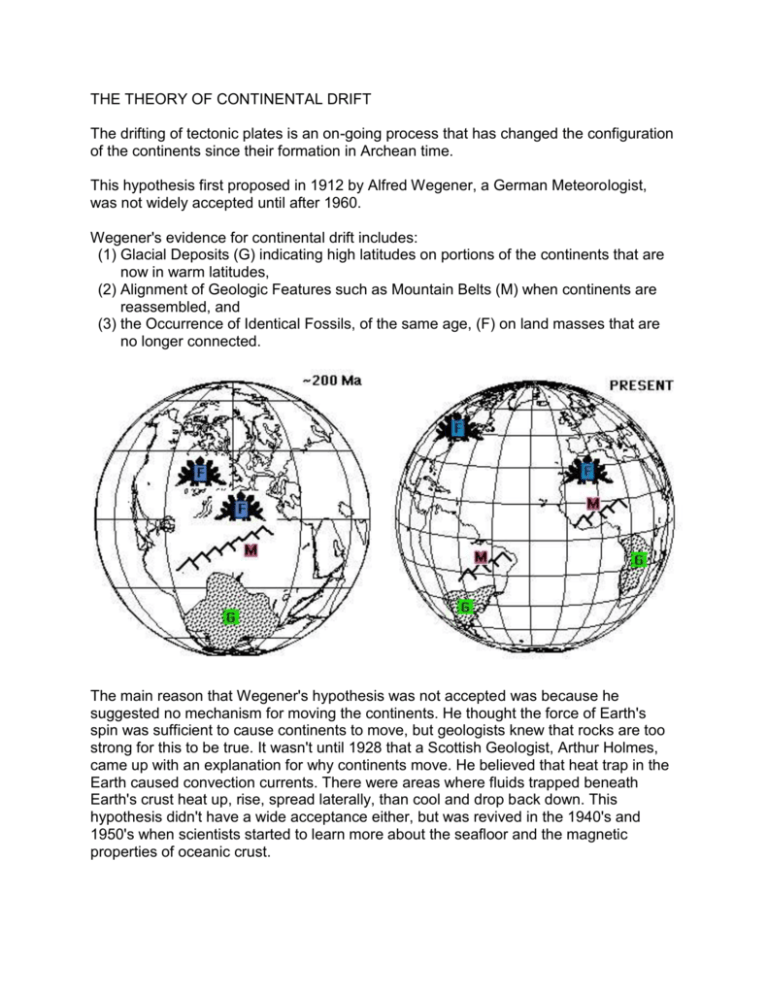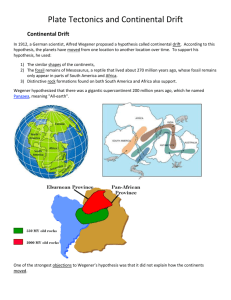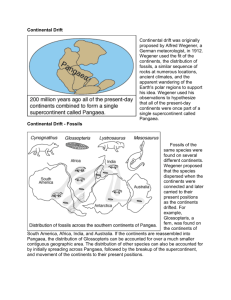THE THEORY OF CONTINENTAL DRIFT
advertisement

THE THEORY OF CONTINENTAL DRIFT The drifting of tectonic plates is an on-going process that has changed the configuration of the continents since their formation in Archean time. This hypothesis first proposed in 1912 by Alfred Wegener, a German Meteorologist, was not widely accepted until after 1960. Wegener's evidence for continental drift includes: (1) Glacial Deposits (G) indicating high latitudes on portions of the continents that are now in warm latitudes, (2) Alignment of Geologic Features such as Mountain Belts (M) when continents are reassembled, and (3) the Occurrence of Identical Fossils, of the same age, (F) on land masses that are no longer connected. The main reason that Wegener's hypothesis was not accepted was because he suggested no mechanism for moving the continents. He thought the force of Earth's spin was sufficient to cause continents to move, but geologists knew that rocks are too strong for this to be true. It wasn't until 1928 that a Scottish Geologist, Arthur Holmes, came up with an explanation for why continents move. He believed that heat trap in the Earth caused convection currents. There were areas where fluids trapped beneath Earth's crust heat up, rise, spread laterally, than cool and drop back down. This hypothesis didn't have a wide acceptance either, but was revived in the 1940's and 1950's when scientists started to learn more about the seafloor and the magnetic properties of oceanic crust.











